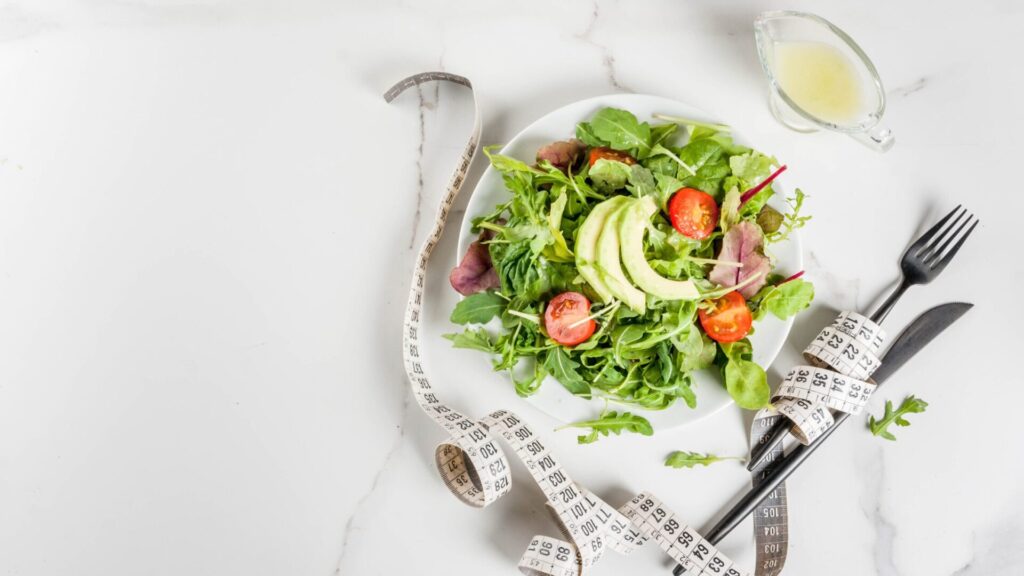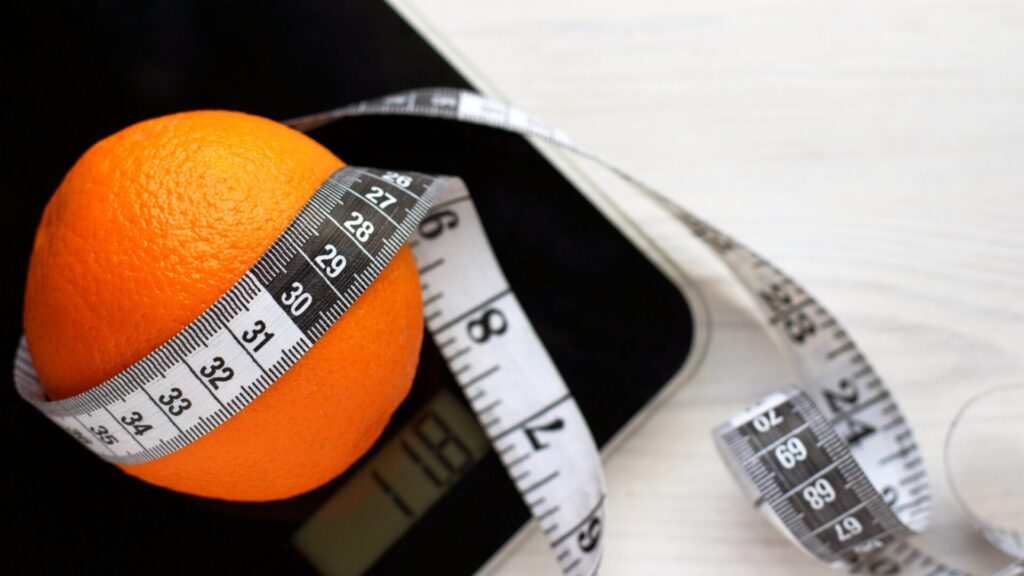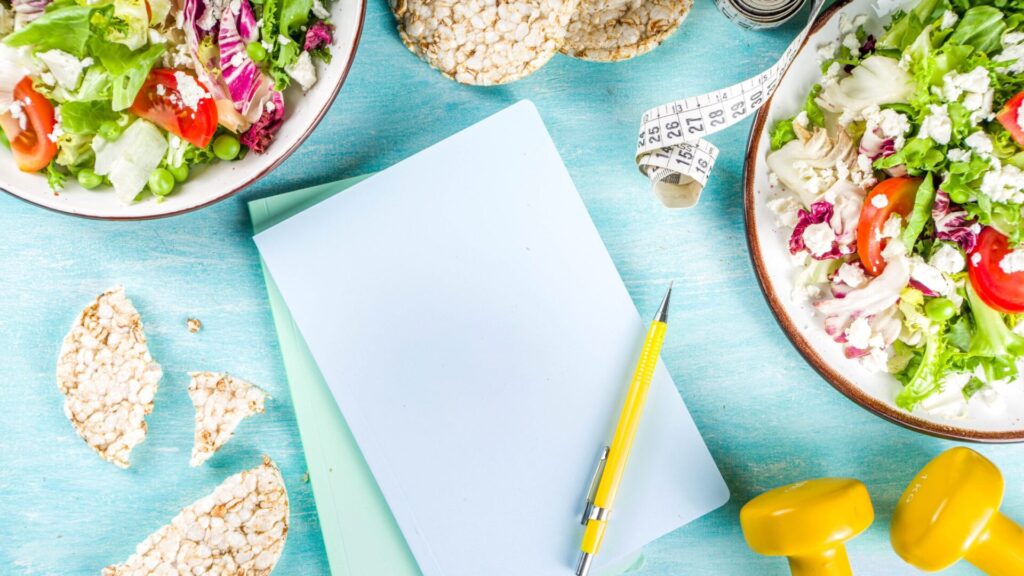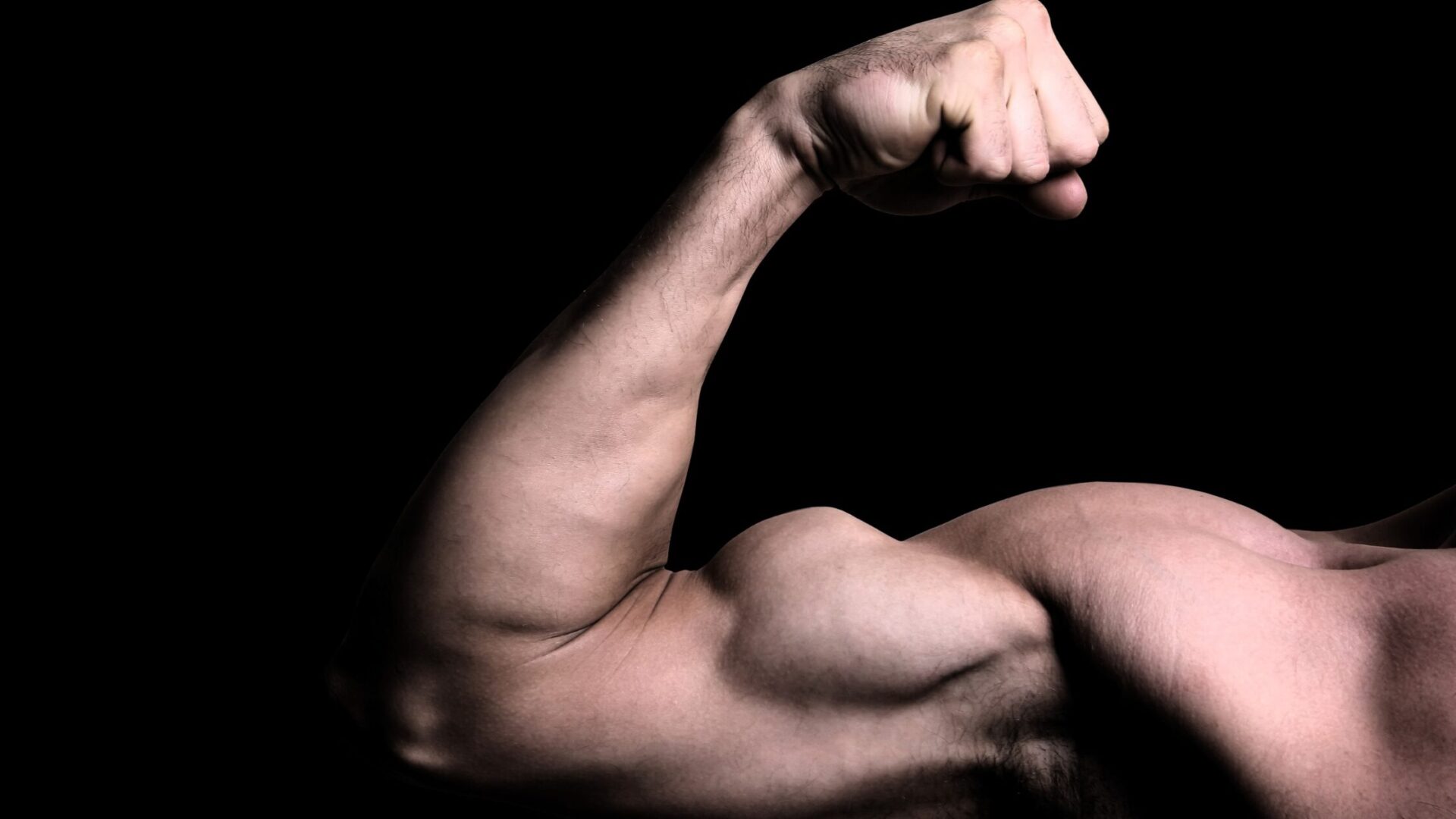What is the Best Food for Weight Loss? Top 5 Foods For Weight Loss
Losing weight is a common health goal for many people. Achieving and maintaining a healthy weight can significantly enhance overall health and well-being, reducing the risk of heart disease, stroke, and other chronic illnesses. One key factor that influences weight loss is the food we consume. Healthy eating for weight loss doesn’t mean you have to starve. Instead, it’s about consuming the right nutrients in proper proportions. In this article, we will delve into the top 5 weight loss foods that can aid your journey towards healthier living.
- Whole Grains: Could this category of foods, rich in fibre and complex carbohydrates, be the secret weapon for weight loss?
- Lean Proteins: Is there a connection between these muscle-building foods and shedding those extra pounds?
- Leafy Greens: Could the key to unlocking your weight loss potential be found in these nutrient-packed vegetables?
- Berries: Do these small, vibrant fruits hold the power to boost your weight loss journey?
- Nuts and Seeds: Are these crunchy snacks more than just a tasty treat? Can they actually help you lose weight?
Stay tuned as we reveal the answers and provide you with some delicious, weight-loss-friendly food options that you can easily incorporate into your daily diet.
Understanding Weight Loss

Weight loss is fundamentally about creating an energy deficit in your body. Simply put, you need to expend more calories than you consume. This can be achieved through a combination of increased physical activity and modifications to your diet. When your body is in a state of negative energy balance, it begins to utilize stored fat for energy, resulting in weight loss. However, it’s important to approach weight loss in a healthy and sustainable way. Rapid or drastic weight loss can lead to muscle loss, nutritional deficiencies, and other health complications. Therefore, the aim should be gradual weight loss that promotes long-term changes in dietary habits and physical activity.
Nutritional Aspects of Weight Loss
The role of nutrition in weight loss cannot be overstated. Here are some key points explaining how nutrition contributes to weight loss:
- Balanced Diet: Consuming a balanced diet that includes a variety of nutrients from different food groups can help ensure that you are getting all the necessary nutrients your body needs for its functions while also aiding in weight loss.
- Portion Control: Managing portion sizes is an important aspect of weight loss. Eating smaller portions can help reduce calorie intake and contribute to weight loss.
- Protein Intake: Adequate protein intake can increase feelings of fullness, decrease hunger, and help you eat fewer calories. This can be beneficial for weight loss.
- Fiber-Rich Foods: Foods high in fibre can help you feel full, which can help prevent overeating and aid in weight loss.
- Low-Calorie Foods: Eating more low-calorie, high-volume foods, like fruits and vegetables, can help you feel full and satisfied, which can prevent overeating and promote weight loss.
- Reduced Sugar and Processed Foods: Reducing the consumption of sugary beverages, sweets, and processed foods can lower your calorie intake and contribute to weight loss.
- Hydration: Staying well-hydrated can also aid in weight loss. Drinking water can help control hunger and keep you satiated, leading to less calorie consumption.
Top Foods for Weight Loss: Vegetables

Vegetables play a crucial role in weight loss due to their high fibre content and low-calorie count. They are packed with essential vitamins and minerals, which aid in overall well-being. Here are some vegetables that you may want to include in your diet if you are aiming for weight loss:
Broccoli:
This green vegetable is high in fibre, making it an excellent addition to a weight loss diet. It’s also packed with vitamins C and K.
Spinach:
An excellent source of iron, spinach is low in calories and high in dietary fibre. It’s a versatile vegetable that can be incorporated into a variety of meals.
Bell Peppers:
These colourful vegetables are high in Vitamin C and low in calories. They also contain capsaicin, which may help increase metabolism and promote weight loss.
Carrots:
Rich in beta-carotene and fibre, carrots can be consumed raw, cooked, or in juice form. They can make a great low-calorie snack.
Cucumbers:
Composed mostly of water, cucumbers are a refreshing and hydrating low-calorie choice.
Top Foods for Weight Loss: Fruits

Fruits are packed with essential vitamins, minerals, and fibre but are low in calories, making them an excellent choice for weight loss. Here are some fruits you should consider adding to your weight loss diet:
Apples:
A great source of dietary fibre and vitamin C, apples are also low in calories. Eating an apple can help keep you full and resist the urge to overeat.
Berries:
Packed with antioxidants and fibre, berries such as blueberries, strawberries, and raspberries can keep you satisfied and aid in weight loss.
Grapefruit:
This citrus fruit has been linked to weight loss due to its potential to control appetite and lower calorie intake.
Bananas:
While higher in calories than some other fruits, bananas are rich in fibre and can keep you feeling full and satisfied.
Kiwi:
This vibrant fruit is an excellent source of vitamin C, vitamin E, and fibre. It’s also low in calories, making it a healthy choice for weight loss.
Top Foods for Weight Loss: Proteins

Lean proteins are essential for weight loss as they can help you feel full and maintain muscle mass while losing weight. Here are some protein-rich foods that can aid in weight loss:
Chicken Breast:
High in protein and low in fat, chicken breast is a great choice for weight loss. It’s also versatile and can be incorporated into a variety of meals.
Eggs:
Packed with protein, vitamins, and minerals, eggs can help you feel full and eat less. They’re also low in calories.
Fish:
Certain types of fish, like salmon and tuna, are rich in protein and omega-3 fatty acids, which can aid in weight loss and improve heart health.
Greek Yogurt:
This type of yogurt is higher in protein than regular yogurt and can keep you satisfied for longer, aiding in weight loss.
Tofu:
A great source of plant-based protein, tofu is also low in calories and can be used in a variety of dishes.
Top Foods for Weight Loss: Whole Grains

Whole grains are a crucial part of a weight loss diet due to their high fiber content which aids in digestion and provides a feeling of fullness, thus preventing overeating. Here are some whole grains you might want to incorporate into your weight loss diet:
Quinoa:
Quinoa is a nutrient-dense food that offers a rich source of protein and fibre. It’s also gluten-free, making it an excellent choice for those with gluten sensitivities.
Brown Rice:
Offering a good balance of fibre, complex carbohydrates, and essential nutrients, brown rice can help keep you satisfied while providing steady energy.
Oats:
Oats are high in fibre, especially beta-glucans, a kind of fibre that’s been linked to various health benefits. They’re also high in protein compared to other grains, which can aid in weight loss.
Barley:
Barley is high in fibre and provides a good amount of protein. It also contains beta-glucans which can help lower cholesterol levels, control blood sugar, and promote weight loss.
Whole Grain Bread:
Opt for bread labelled ‘100% whole grain’ or ‘100% whole wheat’. These bread types are more nutritious and filling compared to white bread, making them a better choice for weight loss.
Balancing Diet and Exercise: Importance of Combining Healthy Eating with Physical Activity
Synergy of Diet and Exercise
Dieting or exercising alone may lead to some weight loss, but pairing the two creates a potent combination. The synergy of a balanced diet and regular physical activity can accelerate weight loss and lead to more sustainable results.
Enhanced Metabolic Rate
Balancing a nutritious diet with regular exercise can heighten your metabolic rate. Higher metabolism can expedite the burning of calories and contribute to weight loss.
Muscle Gain and Fat Loss
While a nutritious diet provides the necessary fuel for workouts, exercise, particularly strength training, helps build muscle. An increase in muscle mass can aid in fat loss, as muscles burn more calories than fat, even while at rest.
Improved Energy Level
A balanced diet provides the necessary nutrients that help energize the body. Combining it with regular exercise can boost energy levels further, improving overall productivity and wellness.
Disease Prevention
A healthy blend of diet and exercise can greatly reduce the risk of developing chronic diseases such as obesity, cardiovascular diseases, diabetes, and certain types of cancer.
Mental Health Benefits
Regular physical activity combined with a healthy diet can help manage stress, improve sleep, enhance mood, and boost overall mental health.
Long-term Sustainability
While crash diets may lead to rapid weight loss, sustainability is questionable. The combination of healthy eating and consistent exercise is key to long-term weight management and overall health improvement.
Personalizing Your Weight Loss Diet: Tips on tailoring food choices to individual needs
When it comes to weight loss, there is no one-size-fits-all solution. The most effective diet is the one that works best for you. Here are some tips to personalize your weight loss diet:
Understand Your Dietary Preferences:
Identify your favourite healthy foods and incorporate them into your diet. If you enjoy what you eat, it will be easier to stick to your weight loss plan.
Consider Your Daily Routine:
Your eating habits should align with your daily schedule. If you’re busy in the mornings, prep a healthy breakfast the night before or focus on easy-to-make meals. If you have more time in the evenings, consider cooking a larger dinner with leftovers for lunch.
Cater to Your Dietary Restrictions:
If you have any food allergies, intolerances, or dietary restrictions, create a plan that accommodates these. For instance, gluten-intolerant people can opt for quinoa or brown rice, while vegetarians or vegans can prioritize plant-based proteins like tofu.
Recognize Your Body’s Needs:
Keep track of how different foods affect your body. Some people might feel more energized with a high-protein diet, while others may need more carbohydrates. Remember, what works for others might not work for you.
Seek Professional Advice:
Consider consulting a dietitian or nutritionist. These professionals can provide personalized nutritional advice based on your health status, lifestyle, and weight loss goals.
Avoiding Common Mistakes in Weight Loss Efforts

When embarking on a weight loss journey, it’s crucial to be aware of common dietary mistakes that can impede progress and lead to frustration. Here are some to look out for:
Over-restricting Calories:
While creating a calorie deficit is essential for weight loss, drastically reducing calorie intake can lead to nutrient deficiencies, loss of muscle mass and a slowdown in your metabolism. It is important to maintain a balanced diet that provides sufficient nutrients and energy for your daily activities.
Skipping Meals:
Many people believe that skipping meals can help with weight loss. However, this might lead to overeating later in the day when hunger kicks in, and can also result in nutrient deficiencies. Aim for regular, balanced meals throughout the day.
Neglecting Protein:
Protein is essential when trying to lose weight as it can help maintain muscle mass, increase feelings of fullness and boost your metabolic rate. Make sure to include good sources of protein like poultry, fish, eggs, and plant-based proteins in your diet.
Not Drinking Enough Water:
Staying well-hydrated is crucial when trying to lose weight. Water can aid digestion, help control hunger and boost metabolism. It can be easy to confuse dehydration with hunger, so ensure you drink enough water throughout the day.
Over-reliance on Diet Foods:
Just because a food is labelled as ‘low-fat’ or ‘diet’ doesn’t necessarily mean it’s healthy or beneficial for weight loss. These foods can often be high in added sugars and lack nutritional value. Instead, focus on wholesome, natural foods like fruits, vegetables, lean proteins, and whole grains.
Forgetting about Portion Sizes:
Even healthy foods can lead to weight gain if you eat too much of them. Portion control is key, so be mindful of serving sizes and use measuring tools if necessary to keep your portions in check.
Not Considering Nutrient Timing:
While it’s crucial to pay attention to what you eat, when you eat also matters. Try to align your meals and snacks with your physical activity level for the day. For example, consuming a larger portion of your daily carbohydrates before and after physical activity can provide you with energy and aid in recovery.
By being aware of and avoiding these common mistakes, you can make your weight loss journey more effective and sustainable.
Conclusion
In conclusion, the key points discussed include:
- The role of a nutritious diet and regular strength training in weight loss: They not only help build muscle mass but also burn more calories, leading to fat loss.
- The importance of personalizing your weight loss diet by considering dietary preferences, daily routines, dietary restrictions, and your body’s needs.
- The significance of seeking professional advice for personalized nutritional guidance.
- Common mistakes to avoid during weight loss efforts, such as over-restricting calories, skipping meals, neglecting protein, inadequate water intake, over-reliance on diet foods, neglecting portion sizes, and not considering nutrient timing.
By incorporating these strategies into your lifestyle and prioritizing the inclusion of weight-loss foods like fruits, vegetables, lean proteins, and whole grains, you can make your weight-loss journey more effective and sustainable. Remember, the best diet for weight loss is the one that best fits your lifestyle and dietary preferences and is something you can stick to in the long run.



